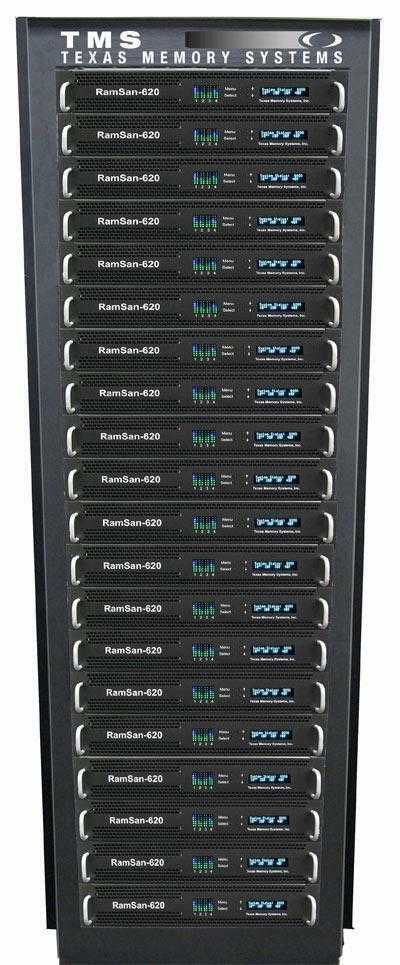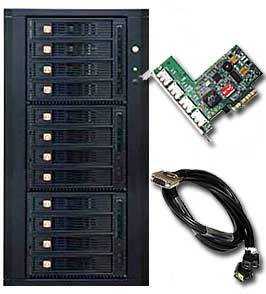I hate to dig up such an old question, but these answers need help. There are a number of different 2U cases that feature 12x3.5" hot swap bays (3 vertically x 4 horizontally -- See Supermicro's SC826), , and even some that also have an internal bay or two (http://www.servaris.com/servers_m2100.php). It's dense, but not impossible. If you want to get a little crazy, Supermicro's SC847 supports 45 hot swap drive bays in 4U (no motherboard) or 36 with E-ATX motherboard, and someone makes a case (the RMC5D2) with 48 vertical hot swap bays with room for E-ATX board and I think 7 full-sized cards in 5U.
I believe this is for Facebook's Haystack system for photos, where they use a RAID 6 controller to connect the 12 drives in a 2U rackmount server. You can buy a low profile one that still supports 12 drives or use a riser card. As part of their IPO filing in 2012, they revealed that they're storing "more than 100 petabytes" of photos and videos. Even with newer 4 and 6 TB drives, that's a lot of these machines.
Facebook also uses a 100+ PB Hadoop system to analyze everything that happens on the site (multiple TB/day). It skips RAID disk arrays and makes the entire machine redundant by splitting large files into 64MB chunks and writing each chunk to multiple machines. For this you can get a motherboard with 8 ports and cheaply add 4 non-RAID ports. I'm pretty sure these machines don't have so many drives, but the technology is based on stuff that Google is doing. Google does have racks of 12 drive RAID free machines, and a lot of interesting computer designs. They're almost big enough for custom parts to be a volume order of commodity hardware.
You can watch a video on Facebook's different types of servers here.
Facebook has somewhat recently unveiled the Open Vault storage system that supports 30 drives in a 2U Open Rack (same overall cabinet width, but 21" wide internally vs standard 19"). There are 2 individual 1U trays that pull out of the chassis, each with 15 drives (5 wide x 3 deep) and 2 SAS expanders. A video on YouTube shows a system where each of the 30 3.5" drive bays have been populated with 2x2.5" SSD's, which will give some serious IO power when combined with 12G SAS. According to SSD manufacturers, a single unit could support 5 million IOPS. A cabinet full would support over 90 million IOPS and 170 GB/s bandwidth (interface limited) and 1 PB of SSD storage (as much as 3.2 PB of helium filled spinning disk). If you're just looking to use it for a really sweet NAS, there's an Open Compute server that uses the Open Vault with ARM server boards inside.
Even more interestingly, Facebook is experimenting with Blu-ray for cold storage (the data isn't accessed much if ever). Their prototype system has 10,368 discs that hold 100GB each and stores about 1 PB of data. They have a robotic picker that accesses the discs from a rack that holds 24 magazines, with 36 cartridges per magazine and 12 discs per cartridge. Once they get the bugs out and features tweaked, I expect the 10,000 disc Blu-ray changer will be part of the Open Compute Project.


1In regards to FB, which was the context of this question. They certainly don't use enclosures like this. – MDMarra – 2009-09-16T12:03:36.607